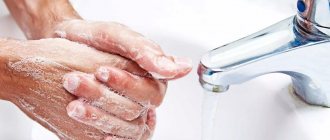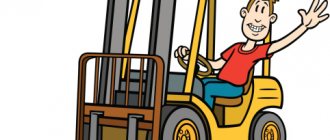What is PPE: decoding and definition
PPE stands for “personal protective equipment.” These are means used by the employee to prevent or reduce exposure to harmful and dangerous production factors, as well as to protect against pollution. They are used in cases where work safety cannot be ensured in any other way (for example, by the design of equipment, organization of production processes, architectural and planning solutions and collective protective equipment).
PPE may include special clothing, special footwear, isolation suits, respiratory protection, hand protection, head protection, face protection, hearing protection, eye protection, and various safety devices.
Checking PPE upon acceptance
At enterprises that use substances harmful to human health or have hazardous working conditions in their activities, the use of personal protective equipment is mandatory. The employer must ensure not only the issuance and training on the use of PPE, but also the purchase of the necessary protective equipment.
For bulk purchases of personal protective equipment, each batch must be tested. To check PPE, a commission is assembled, which checks the protective equipment and makes a decision on their suitability.
In case of acceptance of large quantities of personal protective equipment of simple design, for example, protective gloves, boots, raincoats, etc. the commission conducts a visual inspection not of the entire batch, but of several copies selectively, but not less than 10% of the total quantity. When accepting complex personal protective equipment, such as gas masks, respirators, etc. Each device is accepted individually. A visual inspection includes identifying any kind of mechanical damage, rust, or missing parts. If such defects are detected, this protective equipment is sent for repair or written off and replaced with a new one.
When an enterprise accepts new batches of personal protective equipment, it is mandatory to check that the quantity of goods received corresponds to the quantity stated in the application. If PPE kits are accepted, the presence of all components of the kit is checked.
It is very important to check the presence of markings, including indications of the protective properties of the product. In the case of kits, markings must appear on each part of the kit. Also, the products must bear the trademark and name of the manufacturer.
Also checked:
- for protective clothing - compliance with materials of manufacture, quality of seams, fasteners,
- for safety shoes - size, color, compliance of materials, quality of tailoring and fastening of parts,
- for safety glasses and face shields – the absence of mechanical damage to the glass, the strength of their fastening, the presence of instructions for use,
- for safety helmets – completeness of the set (presence of a balaclava, headband), absence of damage to the body and equipment, reliability of fastenings,
- for respiratory protection equipment – absence of mechanical damage, compliance with the configuration, validity period, availability of instructions for use
And so on.
Types of personal protective equipment (PPE)
According to GOST 12.4.011-89 “System of occupational safety standards (SSBT). Protective equipment for workers. General requirements and classification” personal protective equipment, depending on the purpose, is divided into 12 classes:
- insulating suits (pneumatic suits, waterproofing suits, spacesuits);
- respiratory protection equipment (gas masks, respirators, self-rescuers, pneumatic helmets, pneumatic masks, pneumatic jackets);
- special protective clothing (sheep coats, coats, short coats, short fur coats, capes, raincoats, half-coats, dressing gowns, suits, jackets, shirts, trousers, shorts, overalls, bib overalls, vests, dresses, sundresses, blouses, skirts, aprons, shoulder pads);
- foot protection (boots, boots with an extended top, boots with a short top, ankle boots, boots, low shoes, shoes, shoe covers, galoshes, boots, slippers (sandals), high boots, boots, shin guards, over the knee boots, knee pads, foot wraps);
- hand protection (mittens, gloves, semi-gloves, finger pads, palm pads, wrist pads, sleeve pads, elbow pads);
- head protection (hard hats, helmets, balaclavas, caps, berets, hats, caps, headscarves, mosquito nets);
- face protection equipment (face shields);
- eye protection (goggles);
- hearing protection equipment (anti-noise helmets, anti-noise earplugs, anti-noise headphones);
- fall protection equipment and other safety equipment (safety belts, cables, hand grips, manipulators, knee pads, elbow pads, shoulder pads);
- dermatological protective products (protective creams, skin cleansers, reparative agents);
- complex protective equipment.
Personal protective equipment is also classified depending on the influencing factors:
- protection from mechanical damage;
- protection from industrial pollution;
- protection against watery solutions;
- protection against non-toxic dust;
- protection against toxins and other chemical compounds;
- protection from biological factors (viruses, microbes);
- radiation protection;
- protection from electrical influence;
- protection when working in low visibility areas.
Introduction
Personal protective equipment (classification and characteristics of individual and collective protective equipment, design of personal protective equipment, basic rules for the use of personal protective equipment).
Personal protective equipment (PPE) is equipment designed to protect the skin and respiratory tract from exposure to toxic substances and other harmful airborne contaminants.
Such products are divided into personal respiratory protective equipment (PPE) and skin protection. Personal protective equipment includes gas masks, breathing masks, cotton and gauze bandages, and protective suits to protect the skin. The choice of protective equipment is carried out taking into account their purpose and protective properties, specific environmental conditions and the type of infection.
The classification of PPE in Russia is set out in GOST 12.4.011-89, where it is divided into 11 classes according to purpose, which, in turn, are divided into types in accordance with their design:
- special protective clothing (tulips, coats, short coats, capes, robes, etc.).
- hand protection (gloves, mittens, fingertips, sleeves)
- foot protection (boots, shoes, hoods, slippers)
- Eye and face protection (safety glasses, protective mask)
- head protection devices (helmets, ridge protectors, caps, berets, etc.).
- respiratory protection equipment (gas masks, breathing apparatus, self-rescuers, etc.).
- isolation suits (air suits, suits, etc.)
- Hearing protection devices (plugs, headphones, earplugs, etc.)
- fall protection devices (seat belts, cables, etc.).
- Dermatological protection products (skin cleansers, reactive ingredients)
- comprehensive protection means.
All PPE received by enterprises is issued to employees after inspection by a commission (the composition is approved by the employer).
The main task of the commission is to prevent the use of PPE at the enterprise:
- does not fulfill the request;
- do not have a certificate of conformity
- not suitable for work conditions;
- does not correspond to the marking for protective properties;
- that do not meet the requirements of regulatory and technical documentation (GOST, TU, TO).
PPE is checked immediately upon its arrival at the warehouse, but no later than 10 days from the date of arrival. The plant must have a dedicated room with a work table and measuring instruments, regulatory and technical documentation, catalogs, directories, etc. for inspection. Each new batch of personal protective equipment arriving at the enterprise must undergo an external inspection and be checked for compliance with the declared range of models, sizes, height, color, pedigree, and purpose. Large batches are checked randomly, but not less than 10% of the total volume. The main sign confirming the compliance of personal protective equipment with the standard is the certificate of conformity and the corresponding marking in accordance with GOST 50460-92. Based on the results of the PPE inspection, a report is drawn up in the specified form. In case of non-compliance, PPE must be returned to the supplier.
Requirements for personal protective equipment
Here are the basic requirements for PPE according to GOST 12.4.011-89:
- Protective equipment for workers must ensure the prevention or reduction of hazardous and harmful production factors. The PPE itself should not be a source of hazardous and harmful production factors.
- Protective equipment must meet the requirements of technical aesthetics and ergonomics.
- The choice of a specific type of protective equipment for workers should be made taking into account the safety requirements for a given process or type of work.
- PPE should not change its properties during washing, dry cleaning and disinfection.
- Personal protective equipment must be assessed for protective, physiological, hygienic and performance indicators.
- Requirements for labeling personal protective equipment must comply with GOST 12.4.115 and labeling standards for specific types of personal protective equipment.
- Personal protective equipment must have instructions indicating the purpose and service life of the product, the rules for its operation and storage.
Routine PPE checks
During long-term storage of personal protective equipment, they are also subject to routine inspections. The timing of inspection of each type of PPE is regulated by relevant regulations. In general, scheduled inspections are carried out at least once a quarter. During inspections, a visual inspection of each protective equipment (or random inspection) is carried out; if damage or rust is detected, the parts are either replaced or the PPE is sent for repair. If it is impossible to restore the functionality of the protective equipment, it must be written off.
Inspection of personal respiratory protection equipment includes a visual inspection for dirt, rust, dust, inspection of the facepiece for cracks or cuts - the mask is stretched for better inspection, checking the filter box for corrosion or rust, and checking the glasses for cracks or chips .
Main conclusions
All employers have a great desire to somehow save money on issuing personal protective equipment, because staff turnover, transfers within the organization, and simply the desire to invest this money in the business so that the margin is larger can put a large burden on the budget.
But everything is not as simple as it seemed at first glance, and extending the period of wearing workwear is not just about drawing up an act and continuing to wear it. No, there is one very significant detail here, without knowing which the employer can be held administratively liable.
A properly organized procedure, a sample of actions and a formalized act of extending the period of wearing workwear will allow the enterprise to save a little on the budget.
I wish you efficient and safe work!
If you have any questions or perhaps you have something to add or complement, write in the comments, this is important for both the author and the readers. If you need help with paperwork, please contact us.
PPE checks before use
Checking PPE before direct use is also mandatory. First of all, this is an inspection of each component and identification of any kind of damage - scratches, cracks, breaks, rust, corrosion, etc. In protective clothing it does not allow through breaks and cracks, holes in the seams, in personal respiratory protection equipment - dents, rust, incomplete configuration, etc.
Also, complex protective equipment, such as RPE, is subject to testing for suitability, tightness of the mask to the face, absence of folds and air permeability. It is very important to correctly determine the size of a gas mask or respirator, since the main condition for using RPE is the tightness of the face mask. The presence and integrity of all elements must be checked.
Full range of labor protection, civil defense and emergency services
Enter your phone number and I will calculate an estimate for your tasks. Enter without the eight. “Bureau of Ekaterina Vorontsova” – professional solutions to your problems: with high quality and on time!
Employer's liability
The employer faces a fine for failure to provide PPE for employees, because if a serious, fatal or group accident occurs due to the fact that the organization decided to save, in the amount of:
- for officials and individual entrepreneurs – from 20,000 to 30,000 rubles;
- for legal entities – from 130,000 to 150,000 rubles.
Moreover, there has been similar judicial practice and the judge will adhere to a similar position when considering the case.
Therefore, either do everything right, or don't take risks.
What kind of PPE can be used to extend the wear period?
But, thus, absolutely all workwear that remains in good condition after the wear period has expired cannot be reused. And this begs the question: “What kind of PPE can be used to extend the wear period?”
You need to approach this issue with caution!
Because in addition to the percentage of wear, it is necessary to take into account the protective properties of workwear, which may decrease over time, and accordingly, proper safety of workers will not be ensured.
The Ministry of Labor even says this in its explanatory letter dated November 2, 2021 N 15-2/ОOG-3886, that the period of use of workwear should not exceed the permitted storage period.
And this applies to personal protective equipment that loses its protective properties during storage. This information is marked on personal protective equipment or on packaging; this information can also be found in the passport or instructions (clause 12 of TR CU 019/2011).
And if the passport indicates that the worker can use the PPE only for 2 years, then
the period of
use
cannot be
extended .
If you have simply stored PPE in a warehouse for quite a long time, then before issuing it to an employee, you will have to transfer it to the manufacturer or to a laboratory to determine the protective properties.
You cannot determine this “by eye,” and you should not take such responsibility for the life and health of personnel without knowing for sure whether the protective properties have been preserved or not.
And this event is costly and troublesome, so I do not advise you to take risks and renew only those personal protective equipment that will not be used in harmful and dangerous working conditions.







